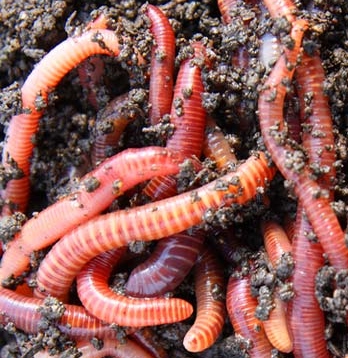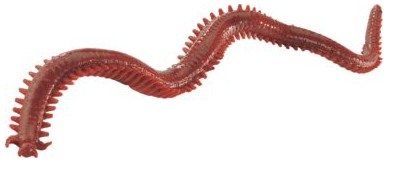The 7-Second Trick For Where To Find Red Wigglers
The 7-Second Trick For Where To Find Red Wigglers
Blog Article
About Where To Find Red Wigglers
Table of ContentsExamine This Report on Where To Find Red WigglersHow Where To Find Red Wigglers can Save You Time, Stress, and Money.The Basic Principles Of Where To Find Red Wigglers The 30-Second Trick For Where To Find Red WigglersOur Where To Find Red Wigglers IdeasNot known Facts About Where To Find Red WigglersAbout Where To Find Red Wigglers
If you have a hard time locating them, try utilizing a shovel to go into the ground and damage the damp dirt with your hands to find them. You can also look for them in the morning when sprinklers damp the dirt. You can simulate the moisture and rain variables on your own! Soak your garden or grass with water and try to find your worms once it obtains dark.After that, lift it using leverage and search for your worms inside the opening. Keep in mind that you may have to dig a couple of times before they show up. Don't neglect to look under rocks, blocks, timber, and various other items you might find on the ground, as that's where worms frequently stay. You ought to be mindful when doing this as you may come across dangerous pets underneath, consisting of snakes, spiders, and scorpions.
Once you catch a number of worms, you will certainly intend to dip your fingers right into sawdust to dry them and enhance your following hold. Note that you shouldn't eliminate way too many worms from one location as this can negatively influence that environment. Put your worms right into their container and store them in the refrigerator.
You can also utilize a pitchfork to draw worms over the ground. Also called a worm grunting stick, this traditional method involves sticking the pitchfork into the ground and afterwards rubbing it with an item of steel or wood. The vibrations that are produced imitate the sound of a mole, which triggers the worms to surface.
Where To Find Red Wigglers - An Overview
For long-term worm storage space, we recommend building a devoted worm farm. Hopefully, you found several ways to catch your worms the following time you require them after closing hours or when you're feeling also lazy to obtain in the vehicle and drive numerous miles to the local worm supplier!
We'll talk about just how to keep red wigglers and why they must be the go-to worm for a lot of composters. Fun fact: The "fetid" part of the binomial name refers to what some claim is a foul-smelling secretion the red wiggler utilizes to fend off killers. The makeup of a red wiggler appears like that of various other usual earthworms; a long-segmented body begins at the pointed head and terminates at a slightly-flatted tail.
The digestive tract is basic, starting at the mouth where the worm begins to consume its food prior to passing it on the throat. The throat is a muscle area which acts like a pump to draw food right into the mouth prior to pumping it out right into the esophagus. The esophagus is narrow and thin-walled and functions as the "waiting space" for the gizzard.
4 Simple Techniques For Where To Find Red Wigglers
Note: This demand for grinding is why grit is recommended in a worm bin. The worm features no native grinding capability so the worm counts on ingested grit to assist grind its food in the gizzard. The tummy is where the initial chemical failure of food happens with the aid of a protein-busting enzyme.
The intestinal tract creates the lengthiest component of the worm and is where the bulk of digestion takes location using enymatic processes. The castings at some point pass with the anus at the end of the worm as pills covered with a biologically-rich mucous. (You're not eating I really hope.) Red wigglers will certainly link around one an additional, trading sperm through their skin.
Within 42 days, these child worms will get to sexual maturation as evidenced by the emergence of the clitellum. A mature red wiggler can be expected to live in between one to 3 years (Where To Find Red Wigglers). The magnificent red wiggler might often be made use of as a lure worm for smaller fish or as a protein resource for chickens and reptiles
And as mentioned above, they are one of the most typical composting worm you could try this out in the world. However why? Well there's probably not simply one factor. Rather, a mix of cost, strength, and convenience in a wide variety of temperatures makes it the most suitable composting worm for the majority of new vermicomposters. Red wigglers and their cocoons can make it through in a large range of conditions.
Not known Facts About Where To Find Red Wigglers
This is a typical technique amongst worm carriers who do not want to run the risk of having the worms sit in a hot or cool warehouse over the weekend break. Worm growers are not saving worms in a circumstance click to find out more where they are all set to deliver. The worms should be gathered from their environment first, so cultivators will usually establish a Friday or Saturday deadline in order to harvest in time for a Monday delivery.
To conserve on shipping price, you might desire to see if there are any type of nearby "Mommy and Pop" shops with a Google search.

7 Easy Facts About Where To Find Red Wigglers Explained
For best outcomes, you desire to shoot for concerning 60-70% wetness degree. At the excellent dampness degrees which is simply under 70% that handful ought to barely generate one drop of fluid.
The European Nightcrawler, the bigger cousin of the red wiggler, is simply as ravenous and also produces a great bait worm. It likes a little bit of a cooler atmosphere than the red wiggler. The African Nightcrawler is a large composting worm and makes a stunning, granular actors.
The Indian Blue is voracious, but also likes a warmer climate and it additionally shows a tendency to leave the container. The red wiggler is a hardy worm and isn't as choosy regarding its climate. I such as to call it the Ford Taurus of vermicomposting worms; you will not boast to your hardcore composting friends that you have them, yet they will offer you well.
The Single Strategy To Use For Where To Find Red Wigglers
As Faucet showed, an angler can do a good deal to make a worm a lot more enticing.

Early morning is prime feeding time, and the lightweight lure's slow descent leaves 5 inches of squirming healthy protein completely sight for rather a while. After you've made the actors, maintain the bond open and put the rod in a forked stick. The line will diminish the rod in slow-moving loopholes as the worm clears up, but usually the slow-moving loopholes will become a blur, and the morning will instantly get instead interesting.
I generally utilize an entire 'spider, favor marabou clothing, and drop the pole for two or 3 seconds when I get a hit.
Not known Incorrect Statements About Where To Find Red Wigglers
If it's there, established the hook with a move instead than a jerk. When in a while you'll locate on your own hooked to those slow, passionate yanks, and feel the weight of a nice walleye.
Report this page